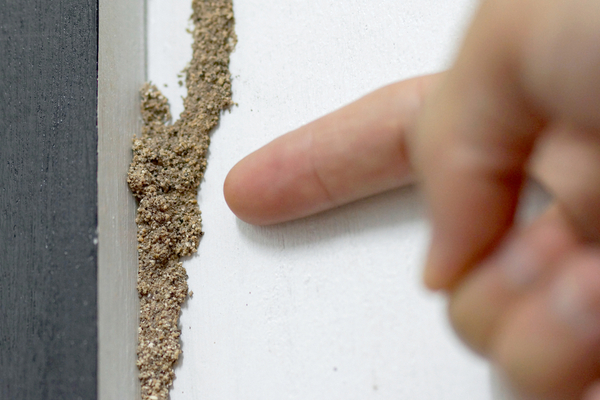Learning how to prevent termites is something every homeowner needs to take seriously. Termite prevention can help you avoid costly damage to your house, and thinking that this can’t happen to you is a huge mistake. As you can see from the following checklist, termite prevention mistakes are the first things to draw termites to your home.
Start with reducing all soil-to-wood contact around your house. Remove all lumber, wood, plants, mulch, paper, cardboard, etc., from around the foundation. Create a 4-inch barrier between mulch and your home. If possible, only the concrete foundation should touch the soil, with siding starting at least 6 inches above the soil. Keep plants a few feet away from your home for the best termite prevention. Make sure storm drains empty a few feet from the foundation and that your soil drainage is effective in minimizing overly moist soil. Fix leaky faucets and eliminate other sources of excess moisture, as that creates perfect conditions for termite invasions. During swarming season (after the winter thaw as temperatures rise – which is usually spring, i.e. now), turn off outdoor lights at night. If possible, relocate lights to recessed areas away from doors and windows, as the light attracts the swarmers.
It’s also vital to inspect your home regularly for evidence of termites such as ‟carton” and ‟frass,” which are the waste materials left behind by subterranean and drywood termites, respectively. Patterns in the wood can help distinguish what type of termite you are dealing with. Subterranean termites eat the soft wood between the grains while drywood termites eat across the grain with no patterns. In sheetrock, blistering may appear where termites entered and fed. Mud tunnels are also common evidence of termite activity. These are ‟highways” that help the termites avoid sunlight, control moisture and stay protected as they look for places to enter and eat your home. Look for cracks in the foundation and other structural issues that make for easy access.
HOW TO KEEP TERMITES OUT
- Keep all shrubbery near your home trimmed, allowing at least 12 inches between the shrubbery and the exterior wall of your home. This will create a nice air flow and allow damp areas to dry out quicker. It also allows termite tubes and termite damage to be discovered earlier.
- Use pine needles instead of mulch. Pine needles are less appetizing to subterranean termites and will also help minimize the environment that other insects such as ants like to nest in as well. If pine needles aren’t available in your area, consider pea gravel or other non-organic material as a barrier between your house and mulch.
- Keep all sprinkler heads pointed away from your home’s foundation. Subterranean termites like moisture and a sprinkler pointing toward you home creates an ideal environment for them.
- Preventative maintenance goes a long way. By properly maintaining the exterior of your home such as wooden siding or windows, it will decrease the likelihood of water leaking behind your wall and creating an ideal environment for subterranean termites.
- If your home has a crawl space underneath it, make sure it has proper ventilation and a good vapor barrier to help minimize moisture from reaching the floor joists and subfloor. Moisture not only can be a conducive condition under your home, it can also cause wood destroying fungus to grow. Moisture in a crawl space can also lead to unpleasant odors inside the house and in the right conditions create an environment for certain kinds of wood destroying beetles to infest the wooden members under your home.
—
Photo Credit: wk1003mike / Shutterstock.com
